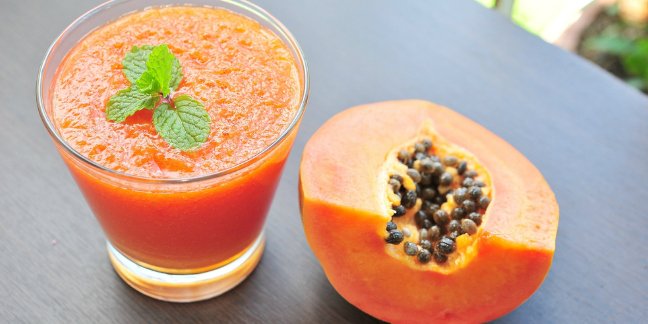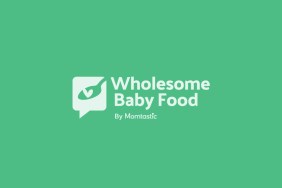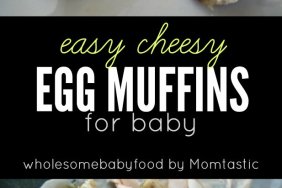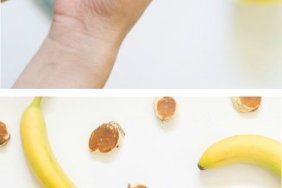Image: Shutterstock
When Can Baby Eat Papaya and what is the Age for Introducing Papaya to Baby: (as early 6-8 months) or 8-10 months 
Papaya is a wonderful tropical fruit to add to your baby’s diet. Learn about papayas and try some of our papaya baby food recipe ideas too.
The Goodness of Papaya for Baby
Papayas are not only sweet, versatile and tasty, they are also a very nutritious fruit. They contain high amounts of Vitamin C (helping absorb non-heme iron), Vitamin A (2516 IU’s.) and even Vitamin E. Papayas are also a good source of fiber and folic acid.
Like Mangos, papayas are tropical fruits and their age for introduction is varied – while they may make a great first food, they are probably not good as THE first food for your baby.
|
Nutrients in 1 cup of Mashed, Raw Papaya
|
|
| VITAMINS:Vitamin A – 2185 IUVitamin B1 (thiamine) – .06 mg
Vitamin B2 (riboflavin) – .07 mg Niacin – .82 mg Vitamin C – 140.1 mg Vitamin K – 6 mcg Folate (important during pregnancy) – 1 mcg Also contains niacin, thaimine and other trace vitamins |
MINERALS:Potassium – 419 mgPhosphorus – 23 mg
Magnesium – 48 mg Calcium – 46 mg Sodium – 18 mg Iron – .57 mg Also contains trace amounts of zinc, manganese and copper. |
When can I introduce Papaya to my baby?
Many parents offer their infants papaya as a later first food. Most often, papaya is offered after the foods that are most easily digestible (sweet potato, avocado, squash, banana for example) have been introduced and well tolerated. Papaya is most often introduced to babies between 7-8 months of age.
How to select and store Papaya for yummy baby and finger food recipes
 According to the EWG, papayas are not one of the “dirty dozen” foods that are most highly contaminated with pesticides – purchasing organic is a personal choice.
According to the EWG, papayas are not one of the “dirty dozen” foods that are most highly contaminated with pesticides – purchasing organic is a personal choice.
Papayas are a bit delicate in that they bruise easily and while the skin/peel is thick, bruising may cause the fruit to begin to rot or may be indicative of rotting. Depending on the type of papaya, you want to look for a reddish/yellowish color. Papayas that are nice and green with a little bit of yellow are fine to choose but these will not be ripe so you should ripen them on the counter. The papaya should be a bit firm but not completely hard. There should be a subtle sweet fragrant smell to a ripe papaya.
Papayas will ripen on your counter but be careful as they may ripen faster than you expect. You can store an uncut papaya in the fridge and also store prepared chunks of papaya in an airtight container in the fridge. Do not store peeled and prepared papaya on the counter.
Best Way to Prepare Papaya for Baby Food?
Preparing papaya is very simple. To prepare a papaya for your baby, all you need to do is peel it, de-seed it, slice and/or dice it. Once you have done this, mash the papaya into a consistency your baby will tolerate. The seeds are edible however they are peppery tasting and would not easily digest in a tiny tummy. Papaya is a great finger food also. Cut the papaya for your baby into small dices and serve.
Some parents who have infants with sensitive tummies will give fruits a gentle steaming to help break down the sugars and fibers for easier digestion. If you feel this is the case for your infant, chunk the papaya and then steam for 5-10 minutes until very soft.
Try Some Papaya Baby Food Recipes:
Papaya Mash
1 fully ripened papaya
Directions:
Step 1: Peel and de-seed a fully ripened papaya then cut into chunks
Step 2: Mash or puree as needed for your baby’s preference
You may wish to steam papaya chunks for a bit to soften them and enable easier digestion.
Papaya Peach Yogurt (8 months+)
Ingredients:
- 1/2 cup pureed/mashed papaya
- 1/2 cup peach puree
- Plain whole milk yogurt as desired
Directions:
Step 1: Blend papaya and peach puree
Step 2: Add plain whole milk yogurt and mix
Step 3: Add cereal (if desired) to thicken up.
Tropical Chicken and Brown Rice (8months+)
Ingredients:
- 1/2 cup (Brown/or Jasmine) Rice
- 2 cups water
- 1/4 cup papaya cubes
- 1/4 cup mango cubes
- 1 or 2 boneless chicken breasts
- pinch of ginger and nutmeg if desired
Directions:
Step 1: Combine all of the above ingredients in a medium saucepan.
Step 2: Cook over medium-low heat for 30 minutes or until rice is soft, fragrant and a bit soupy.
Step 3: Take out the chicken breast(s) and cut into small pieces, transfer back to saucepan
Step 4: Add more water if needed and stir frequently to stop sticking to the pot and add more milk or water if necessary.
Step 5: Cook an additional 15 minutes or until chicken is done
Once the mixture is fully cooked, allow to cool for 10 minutes and then transfer to a blender or food processor. Puree or chop as needed for your baby’s age and texture requirements. This makes a great finger food meal for older babies and toddlers alike.
Foods Good to Mix With Papaya for Baby
- Apples
- Avocado
- Bananas
- Blueberries
- Mango
- Peaches
- Carrots
- Butternut or Acorn Squash
- Zucchini or Summer Squash
- Sweet Potato
- Chicken
- Pork
- Yogurt
 Has this happened?
Has this happened?
The Papaya I Bought Smells FOUL.
It is not uncommon to think that the papaya you just bought is rotten. Papayas have a very unpleasant smell to many people, and I certainly dislike the nasty smell as well. Please visit our “Opening a Papaya Smell” post on our Blog to learn more
ORAL ALLERGY SYNDROME |
|---|
| The food on this page may be one involving OAS. OAS occurs when a person sensitive/allergic to pollen develops a reaction to fruits/veggies that have a similar type of pollen. Itching & swelling of the lips, the mouth and/or throat are typical symptoms. These symptoms normally appear within minutes of eating the offending food and may be worse during the spring and fall pollen seasons. Rarely is an OAS life threatening. Click below to learn more. |
| Birch Pollen Allergies |
| Birch pollen allergies are associated with apple, carrot, cherry, pear, peach, plum, fennel, walnut, potato, spinach, buckwheat, peanut, honey, celery, and kiwifruit. |
| Cedar Allergies |
| Japanese cedar allergies are associated with melon, apple, peach and kiwifruit. |
| Mugwort Allergies |
| Mugwort allergies are associated with celery, carrot, spices, melon, watermelon, apple, hazelnut, and chestnut. |
| Grass Pollen |
| Grass pollen allergies are associated with melon, tomato, watermelon, orange, rice and cherry. |
| Ragweed Pollen |
| Ragweed allergies are associated with melon, chamomile, honey, banana, and sunflower seeds. |
| Latex |
| Latex allergies may be cross-reactive to banana, avocado, kiwi and papaya. |
![]() Remember, always consult with your pediatrician regarding introducing solid foods to your baby and specifically discuss any foods that may pose allergy risks for your baby.
Remember, always consult with your pediatrician regarding introducing solid foods to your baby and specifically discuss any foods that may pose allergy risks for your baby.
![]() This site complies with the HONcode standard for trustworthy health information: verify here.
This site complies with the HONcode standard for trustworthy health information: verify here.



